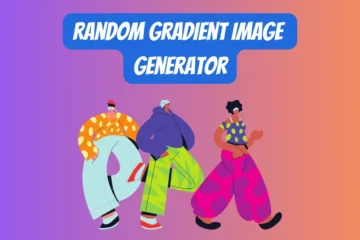AI Temperature Parameter Playground
Explore how temperature parameter affects AI model creativity and randomness
Table of Contents
Understanding AI Creativity: A Deep Dive into the Temperature Parameter
Have you ever wondered why AI sometimes gives you straight-laced, factual answers and other times surprises you with wildly creative responses? The secret lies in a crucial setting called the “temperature parameter.” My interactive Gen AI Temperature Parameter Playground tool lets you explore this concept firsthand—turn the knob and watch how AI behavior changes in real-time! With the Gen AI Temperature Parameter Playground, you can truly understand the dynamics of AI creativity.
Playing with AI’s Creative Dial
This Temperature Playground isn’t just another technical demo—it’s your personal control panel for AI creativity. Picture an old-fashioned radio dial, but instead of tuning between stations, you’re adjusting how “wild” or “conservative” the AI’s responses will be.
As you rotate the knob from 0 to 1, you’ll notice three key changes:
- The creativity meter visually represents where you land between strict predictability and freewheeling imagination
- Use case cards dynamically update to show ideal applications for your current temperature setting
- The display pulses with energy as you crank up the creativity, giving you visceral feedback
“What’s the practical use?” you might ask. Well, imagine you’re:
- Writing technical documentation (low temperature = 0.2)
- Crafting marketing copy (medium temperature = 0.5)
- Brainstorming product ideas (high temperature = 0.8)
Each scenario requires a different balance of consistency and originality—exactly what temperature controls.
What Exactly Is the Temperature Parameter?
In technical terms, temperature modifies how an AI model selects the next word in its response. But let’s break that down into human terms.
Think of temperature as the “adventurousness” dial for AI:
- Low temperature (0-0.3): The AI plays it safe, always choosing the most obvious, statistically likely next word. Great for facts, terrible for poetry.
- Medium temperature (0.4-0.7): The AI starts taking calculated risks, occasionally picking less obvious words that still make sense. The sweet spot for most creative tasks.
- High temperature (0.8-1.0): The AI gets experimental, sometimes brilliant, sometimes nonsensical. Perfect when you want to be surprised.
An analogy I love is comparing it to a chef:
- 0 temperature: Always follows recipes exactly
- 0.5 temperature: Tweaks recipes with trusted ingredient swaps
- 1.0 temperature: Throws random ingredients together hoping to invent the next culinary trend
Why Temperature Matters in Real-World Applications
See for yourself how temperature settings can make or break AI implementations:
1. Suppose, a legal tech startup initially used default temperature (usually ~0.7) for contract generation. The results may contain creative but legally dangerous phrasing. Dropping to 0.2 can fix this up.
2. A game studio couldn’t get interesting character backstories until they cranked the temperature to 0.85. The “bad” outputs can easily be discarded, while the gems- pure gold!
The key insight? There’s no universally “correct” temperature- it depends entirely on your use case:
| Temperature | Best For | Watch Out For |
|---|---|---|
| 0.0-0.3 | Technical writing, data reporting, code generation | Can sound robotic and repetitive |
| 0.4-0.6 | Business emails, marketing copy, social media | May lack distinctive voice at lower end |
| 0.7-1.0 | Brainstorming, creative writing, ideation | Requires heavy filtering of poor outputs |
Getting the Most From Temperature Controls
After helping dozens of teams implement AI solutions, here are my pro tips:
- Start conservative – Begin at 0.5 and adjust in 0.1 increments
- Document your settings – Note which temperatures work for different use cases
- Combine with other controls – Use temperature with max length and stop sequences
- Embrace the experimentation – Some of our best campaign ideas came from “too high” temperature outputs
Remember my playground’s creativity meter? That’s not just decoration—it represents the fundamental tradeoff between reliability and originality that every AI application must balance.
The Future of Temperature Control
What excites me most is how temperature controls are evolving:
- Dynamic temperature – Systems that automatically adjust based on context
- Per-section variation – Different temperatures within a single document
- User-calibrated defaults – Learning individual preferences over time
The Temperature Playground we’ve built gives you a hands-on feel for these concepts that no technical explanation could match. So go ahead—turn that knob, watch the responses change, and discover your perfect balance between AI predictability and creative spark.
After all, in the words of one unexpectedly poetic high-temperature output I once got: “Creativity is just controlled randomness, and temperature is the control.” Couldn’t have said it better myself.
I’d love to hear your ideas! What playful AI experiments should I cook up next in the Gen AI Playground arena? Share your dreams below—let’s build something magical together!
Watch out- more Gen AI Playgrounds loading soon!







